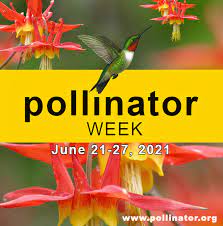
by Sheila Dunning | Jun 10, 2021
Are you one of those that hear the word “pollen” and sneeze? For many, allergies are the only association with plant pollen. But pollination – the transfer of male pollen grains into the female flower organs to create fertile seeds – is an essential part of a healthy ecosystem. Pollinators play a significant role in the production of over 150 food crops. Corn and rice are wind pollinated. Just about everything else, including chocolate, depends on an insect, bird or mammal. Successful pollination of a single flower often requires visits from multiple pollinators. But, there are also plants that need a specific species in order to complete the task. They are so interdependent that if one disappears, so will the other.
Unfortunately, reports from the National Research Council say that the long-term population trends for some North American pollinators are “demonstrably downward”.
 In 2007, the U.S. Senate unanimously approved and designated “National Pollinator Week” to help raise awareness. National Pollinator Week (June 21-27, 2021) is a time to celebrate pollinators and spread the word about what you can do to protect them. Habitat loss for pollinators due to human activity poses an immediate and frequently irreversible threat. Other factors responsible for population decreases include: invasive plant species, broad-spectrum pesticide use, disease, and weather.
In 2007, the U.S. Senate unanimously approved and designated “National Pollinator Week” to help raise awareness. National Pollinator Week (June 21-27, 2021) is a time to celebrate pollinators and spread the word about what you can do to protect them. Habitat loss for pollinators due to human activity poses an immediate and frequently irreversible threat. Other factors responsible for population decreases include: invasive plant species, broad-spectrum pesticide use, disease, and weather.
So what can you do?
- Install “houses” for birds, bats, and bees.
- Avoid toxic, synthetic pesticides and only apply bio-rational products when pollinators aren’t active.
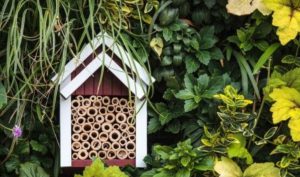
- Provide and maintain small shallow containers of water for wildlife.
- Create a pollinator-friendly garden.
- Plant native plants that provide nectar for pollinating insects.
There’s a new app for the last two.
The Bee Smart® Pollinator Gardener is your comprehensive guide to selecting plants for pollinators based on the geographical and ecological attributes of your location (your ecoregion) just by entering your zip code. http://pollinator.beefriendlyfarmer.org/beesmartapp.htm
Filter your plants by what pollinators you want to attract, light and soil requirements, bloom color, and plant type. This is an excellent plant reference to attract bees, butterflies, hummingbirds, beetles, bats, and other pollinators to the garden, farm, school and every landscape.
The University of Florida also provides a website to learn the bee species and garden design. Go to: https://ffl.ifas.ufl.edu/bees/Bee
or go on-line to see a list of pollinator-attracting plants. https://gardeningsolutions.ifas.ufl.edu/design/gardening-with-wildlife/bee-plants.html
Not only can you find out which plants attract pollinators, you will be given the correct growing conditions so you can choose ‘the right plant for the right place’.
Remember, one out of every three mouthfuls of food we eat is made possible by pollinators.
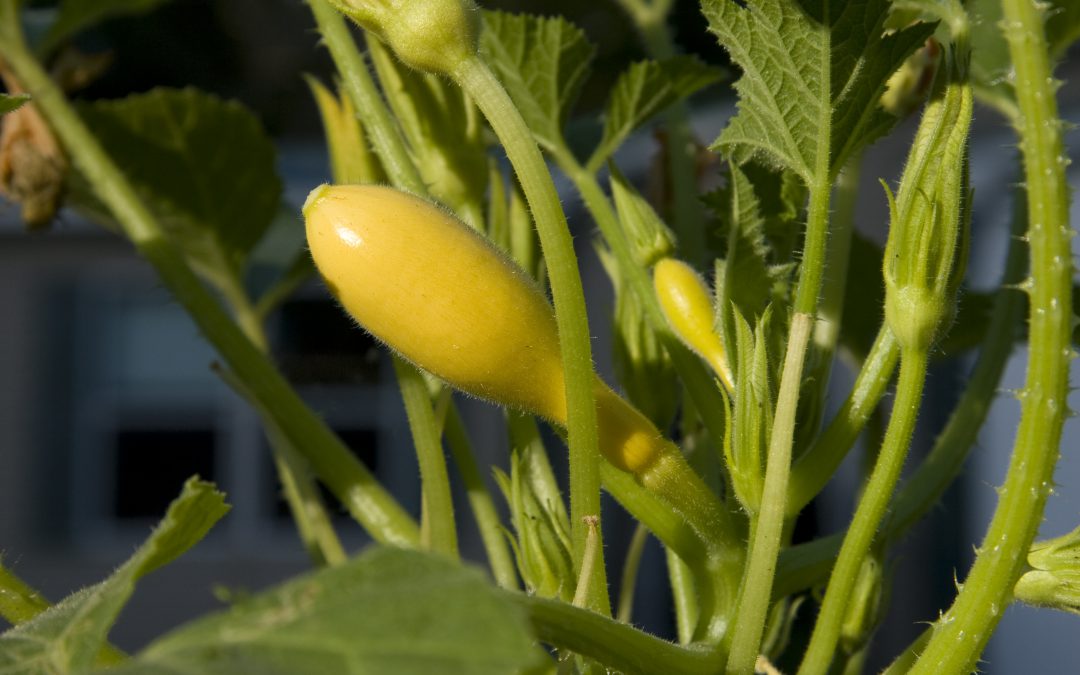
by Matthew Orwat | Jun 11, 2020

Figure 1. “Flowers from Yellow Crookneck squash. Male flower on left
with petals removed to expose male anther with pollen. Female flower
on right with petals removed to show stigma.” EDIS Publication #HS1149
Credits: E. Thralls
This spring, I have received several questions about spring squash. Some of the most worried gardeners asked me why their squash was not producing? Initially, I thought it was a pollination issue. It turns out, in more than one case, their plants were not producing female flowers. Botanically, squash are monecious, meaning that one plant will produce different flowers, some male and some female.
So, why were these squash plants not producing female flowers? The answer is somewhat complected. If squash were planted later in the season and exposed to primarily hotter temperatures, there will be a bias for production of male flowers. This is particularly true when nights are above 70 degrees F and days are above 90 F. I noticed that this spring, squash were only producing male flowers when we were having several days of sustained daytime temperatures over 90 F, but once highs came down into the 80s, production of female flowers resumed. This makes sense from a biological standpoint, since it is very stressful for plants to produce fruit during times of extreme temperature and plants will conserve energy to later be able to produce fruit under more favorable circumstances.
Another factor that can influence production of female flowers is the level of nitrogen in the soil. If nitrogen levels are extremely high, likely due to over fertilization, then plants will remain in a vegetative growth stage for much longer. Growth will be vigorous and dark green, but little female flower production will occur. To avoid this scenario, only apply fertilizer at recommended rates.
Hopefully, if you have run into this problem, this article will help you have better production success in the future. An excellent source that describes this phenomenon further is this article from Iowa State University titled ” Where are the Female Flowers?”
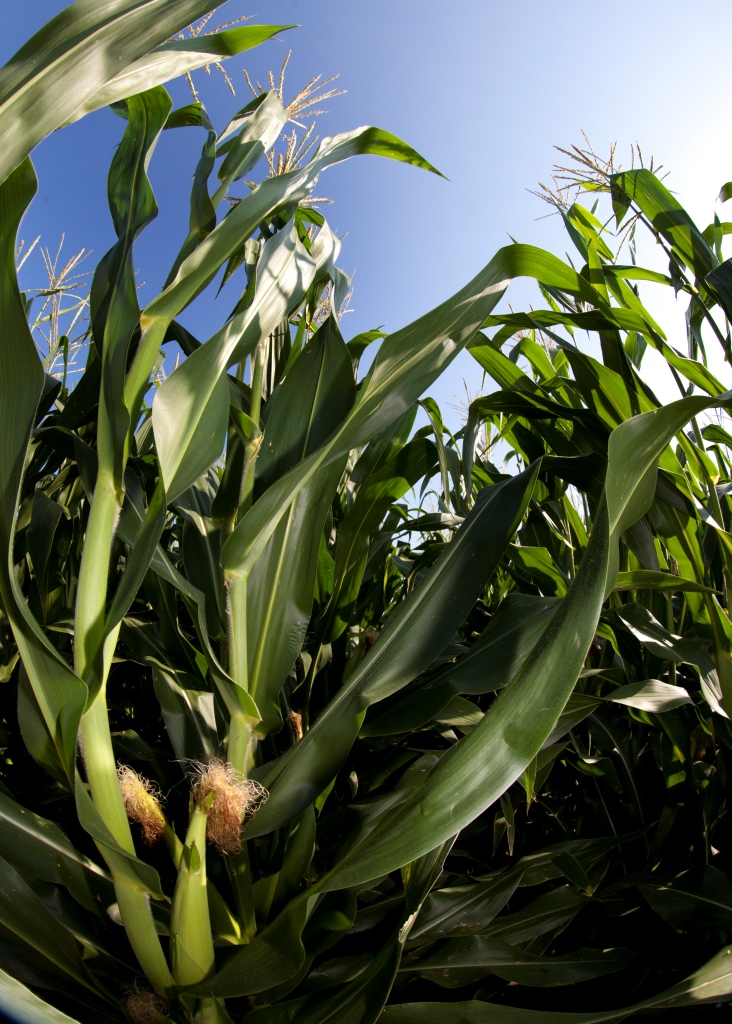
by Judy Biss | Feb 3, 2016

Corn tassels at the top provide the pollen needed to produce the perfect ear of corn on the stalk below. UF/IFAS Photo by Tyler Jones.
It won’t be long until row crops and vegetable gardens are planted and thriving once again next spring. A sometimes taken for granted, yet critical element of any prosperous crop is successful pollination. Most of us know what “text book” pollination means, but did you know in cucurbit plants, (squash, melon, pumpkin) at least 1,000 grains of pollen must be evenly deposited in each bloom to produce a uniform marketable fruit? Or, to grow our favorite summer delight, each watermelon flower must be visited by a honeybee a minimum of 8 times? And how about the fact that each silk in a corn flower is connected to one kernel on the ear of corn, and for the kernel to develop properly pollen must travel down the silk through a pollen tube to the waiting kernel? Add to these facts the dizzying variety of pollen and flowers, bloom times, pollination dynamics, weather conditions, plant growth, and availability of pollinator insects, then one can begin to see how amazing pollination is, and how critical it is to our food supply.
What are the basics of pollination?
The first step of fruit or vegetable reproduction takes place when flowers emerge. Plant flowers can be male, female, or perfect flowers. The male flowers produce pollen. The female flowers have ovaries which, when fertilized, become the fruit or vegetable. “Perfect” flowers have both male and female parts within a single flower. Most garden vegetables such as beans, peppers, and tomatoes have perfect flowers, whereas cucurbits like squash, pumpkins and watermelon, have separate male and female flowers on the same vine. For successful pollination to occur, the male pollen must reach the female ovaries in order for the fruit or vegetable to be produced.
Methods of Pollinating
Transfer of pollen to the plant ovaries for fruit and vegetable production, whether in the same “perfect” flower, or in another separate female flower, occurs in several ways. Some plants, like corn, depend on wind to transfer pollen to the silk, and ultimately ovaries, of the female flower. Other plants, like squash depend on the help of pollinators like insects to deliver the pollen to the ovaries. Plants that produce perfect flowers can self-pollinate, but still benefit from contact with pollinators. In small backyard gardens, many crops in the cucurbit family (squash, melons, etc.) or those that have separate male and female flowers, can be pollinated by the gardener by hand. In the absence of insect pollinators in dooryard gardens, hand pollination will increase yields.
The Importance of Bees
Obviously, in production agriculture, hand pollination of crops is not feasible, and although some crops are wind pollinated, most crops need insect or animal pollinators to accomplish the job. As we know, bees are one of the most important pollinating insects, and it is well documented that yields of many fruit and vegetable crops increase in both quality and quantity when pollinated by honey bees. According to the UF/IFAS publication Minimizing Honey Bee Exposure to Pesticides:
The Business of Pollination
Because they are so critical to increased quality and quantity yields, managed honey bee colonies are used across the country in a thriving contractual pollination industry. According to the UF/IFAS publication Sample Pollination agreement,
The business of pollination is crucial to the agricultural industry in the United States. In Florida, the major need for pollination is in fruit and vegetable production.
And according to the UF/IFAS publication Minimizing Honey Bee Exposure to Pesticides,
Rental of honey bee colonies for pollination purposes is a highly demanded service and a viable component of commercial beekeeping and agriculture. Bee colonies are moved extensively across the country for use in multiple crops every year. There are also over 3,000 registered beekeepers in Florida, managing a total of more than 400,000 honey bee colonies and producing between 10–20 million pounds of honey annually.
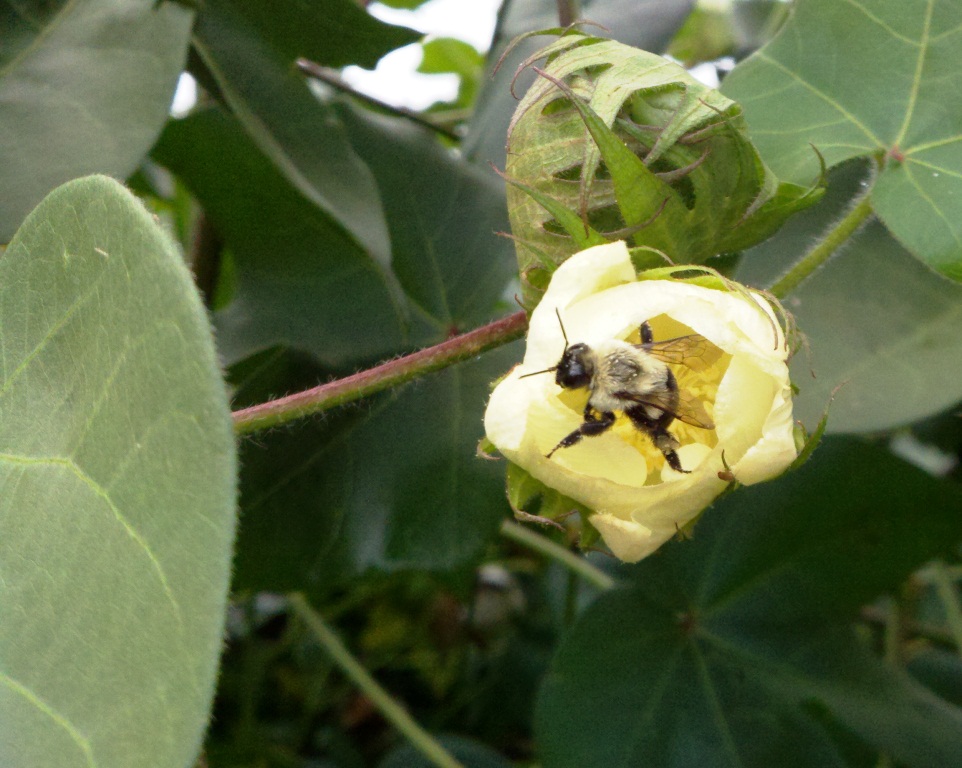
Cotton is largely self-pollinating, but attractive to bees. In some cotton varieties, pollination by bees can increase seed set per boll. Source: University of Georgia Pollination: Crop Pollination Requirements. Photo by Judy Biss
Crop Pollination Requirements
The dynamic of pollination is a fascinating and critical component of both dooryard and production agriculture. Research on plant health, varieties, growth, and potential, as well as research on honey bee colony health and management, all play a role in producing sustainable food yields. The University of Georgia has summarized pertinent literature related to common fruit and vegetable crop pollination requirements (Apple, Blueberry, Cantaloupe, Cucumber, Squash, Watermelon, Other Crops). This comprehensive resource provides the recommended number of beehives per acre for each crop, plus additional information on plant variety characteristics, and other useful information related to maximizing pollination and yield. Check it out: Pollination: Crop Pollination Requirements
So whether you have a dooryard garden or a large farm, it will benefit you to learn all there is to know about your crop’s pollination requirements to maximize yield and quality potential.
For more information on this topic, please see the following publications used as resources for this article:

 In 2007, the U.S. Senate unanimously approved and designated “National Pollinator Week” to help raise awareness. National Pollinator Week (June 21-27, 2021) is a time to celebrate pollinators and spread the word about what you can do to protect them. Habitat loss for pollinators due to human activity poses an immediate and frequently irreversible threat. Other factors responsible for population decreases include: invasive plant species, broad-spectrum pesticide use, disease, and weather.
In 2007, the U.S. Senate unanimously approved and designated “National Pollinator Week” to help raise awareness. National Pollinator Week (June 21-27, 2021) is a time to celebrate pollinators and spread the word about what you can do to protect them. Habitat loss for pollinators due to human activity poses an immediate and frequently irreversible threat. Other factors responsible for population decreases include: invasive plant species, broad-spectrum pesticide use, disease, and weather.




